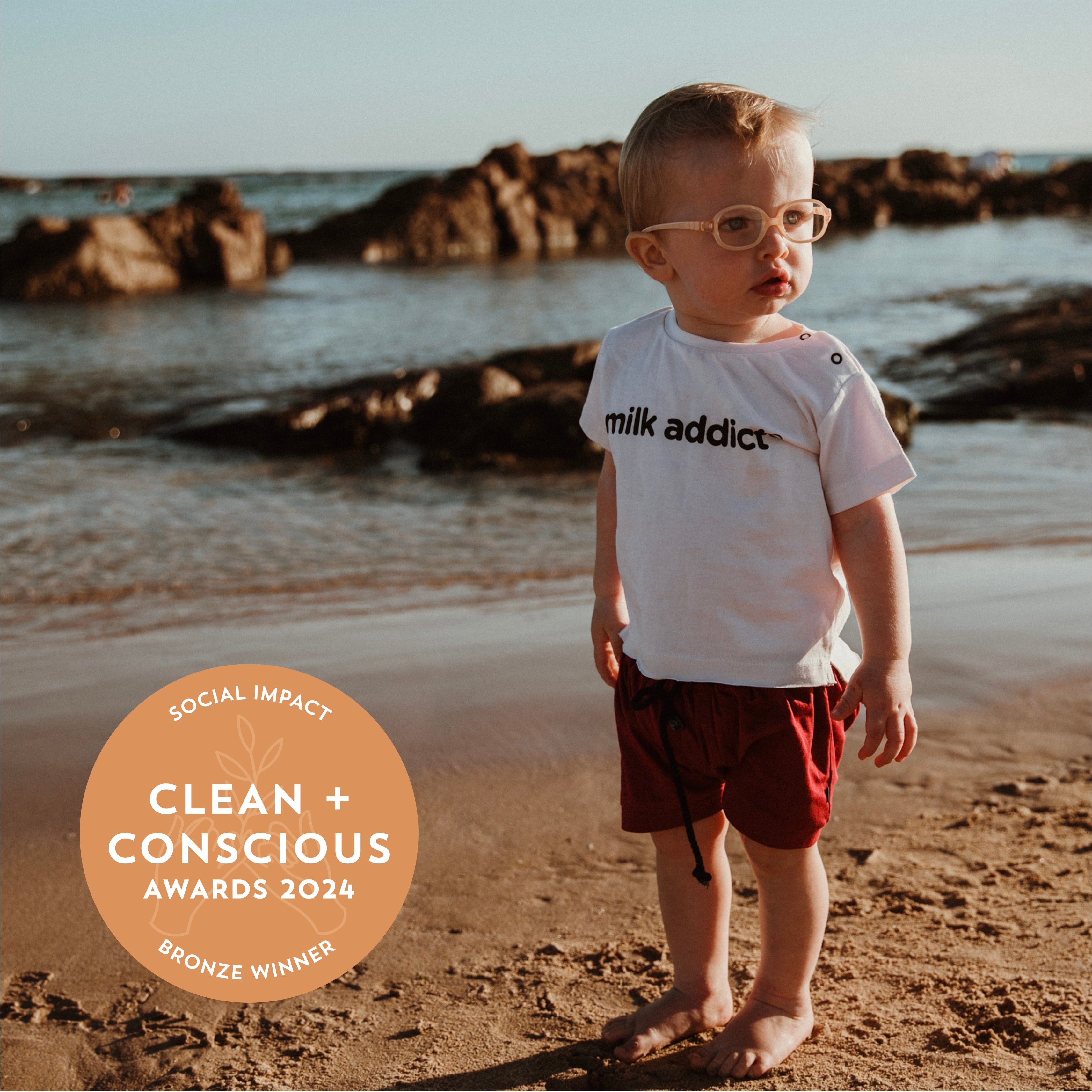WRITTEN BY BRITTANY SIERRA
REPOSTED FROM https://www.thesustainablefashionforum.com/
From sneakers to puff sleeve crop tops and matching sets, the fashion industry heavily relies on petroleum-based synthetic fibers, mainly polyester, to make clothing.
According to the industry nonprofit Textile Exchange, although polyester is the most widely used fiber worldwide, the apparel industry alone accounts for around 32 million tons of the 57 million tons of polyester used yearly.
Technically referred to as polyethylene terephthalate (PET), polyester is what makes your raincoat wick away moisture and your favorite shirt wrinkle-resistant. However, these benefits create significant adverse consequences and environmental damage during production, while in use, at its end of life, and at disposal.
Unlike some natural materials that will biodegrade within a few months or a few years, plastic-based fibers do not biodegrade at their end of life. Instead, they sit as textile waste in the landfill, leaching toxic chemicals into the soil and groundwater and releasing methane into the atmosphere. If synthetics aren't landfilled, they are usually incinerated, releasing carbon and chemicals when burned. Synthetics like polyester are also significant contributors to microfiber pollution — small, tiny plastic particles of plastic that are shed into the air and waterways when clothing made with synthetic fibers are washed and worn.
Despite its adverse environmental impact, brands continue to use polyester because it's durable, versatile, lightweight, and often cheaper. However, as more and more shoppers begin to rethink the impact of their purchases, brands are facing growing pressure to improve their environmental footprint.
Aware of the adverse ecological effects of virgin synthetic fibers, from luxury to sportswear, contemporary to fast fashion, brands have come to rely on recycled plastic (rPET) as an essential part of their ‘sustainable’ materials portfolio. However, recycled polyester isn't the sustainability silver bullet brands want it to be.
Virtually all rPET used in clothing comes from post-consumer PET (water) bottles, not existing textiles.
Why?
Because textile-to-textile recycling is no easy task.
To accelerate recycling efforts, advancements still need to be made in the technology. The infrastructure for cost-effectively collecting and sorting textiles based on fiber composition needs to be established. Investment needs to increase, and conceptually, there needs to be a mindset shift that values old clothes as feedstock, not waste.
Until achieved, closing the loop through textile-to-textile recycling remains in its infancy. As a result, less than one percent of textiles are recycled into new materials — most of which are downcycled into lower-value materials like insulation and mattress stuffing which are eventually landfilled or incinerated.
For brands, recycled polyester is an opportunity to get the material benefits of polyester without the environmental footprint of virgin fibers while underscoring their commitment to sustainability to customers by promoting their material choice as a circular solution. However, without a viable solution for recycling clothing at scale, most polyester will go to the landfill at its end of life, whether recycled or virgin.
For this reason, critics of the fashion industry's adoption of plastic waste as feedstock say rPET is a smokescreen to help brands sell clothes but does little to help the environment. Critics also warn that the industry is doing more harm than good by diverting PET bottles from their established closed-loop system, where for the most part, they can be recycled into new plastic products. Instead, brands are creating more waste by disrupting this closed-loop system to turn plastic into clothing that is destined for landfill or incineration within the current infrastructure.
But fashion isn't the only industry turning to rPET to signal sustainability to its customers. From soft drinks to beauty products, as demand for rPET continues to ramp up, everyone, including fashion, is scrambling for recycled content as a way to check the sustainability box all while increasing its demand, competition, and price.
For many industry experts, the increased demand and competition for post-consumer content emphasizes fashion's need to scale closed-loop recycling systems to ensure future feedstock supply, reduce the volume of waste going to landfills, and limit the extractive production of textiles. Still, critics have lingering concerns about using recycled synthetics in clothing, saying that recycled plastic is a short-term solution and doesn't address the elephant in the room or solve the underlying issue: the waste itself is not the problem but rather fashion's volume-based business model.
While the number of brands using recycled plastic is growing, efforts to eliminate their overall plastic use is less robust. It's here that many sustainability advocates say the potential for recycled plastic to deliver actual environmental benefits falls short. Rather than relying on recycling and recycled content to “save fashion,” critics say brands need to decrease their plastic consumption altogether and decouple profit from a volume-based model that relies on the continued growth and use of materials — particularly those that are synthetic.


